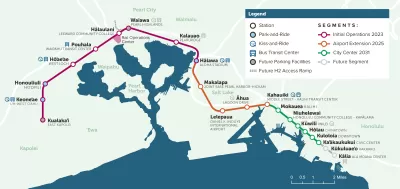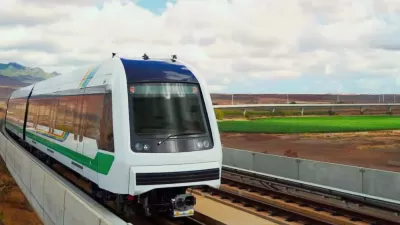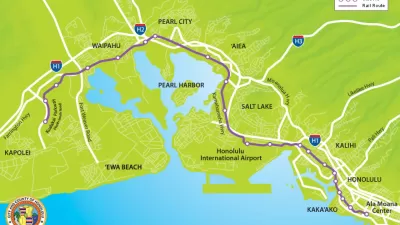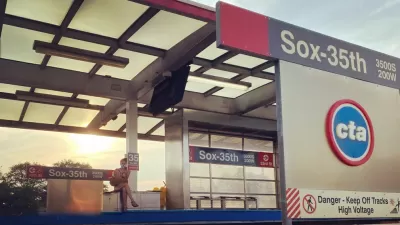In a historic day for public transit, Skyline Rail, a project once deemed the worst transit project in the United States due to extreme cost overruns and construction delays, finally opened to the public at the end of June.

The Honolulu Rail Transit Project, now named Skyline Rail, opened to the public on Friday, June 30, culminating a half century of planning and overcoming serious obstacles with delays and funding shortfalls in the final years.
Honolulu’s new rail service “seemed a near impossibility just 2-1/2 years ago when it was digging a deeper financial hole and federal transit officials had lost faith and were withholding millions of dollars in badly needed funding,” reports Dan Nakaso in a paywalled article for the Star Advertiser.
The opening is just the first phase of a $9.8 billion plan. Nakaso’s article focuses mostly on how the Honolulu Authority for Rapid Transportation and city leadership overcame funding obstacles to get this first leg of the project open, including adopting a new county hotel tax aimed at tourists, approved by the State Legislature, and reducing the scope of the project. A 2012 iteration of the plan called for the entire project to span 20 miles and include 21 stations, from East Kapolei to Ala Moana Center. The current plan will build 19 stations and 18.75 miles of track, ending in Kakaako at the Civic Center Station, or Ka‘akaukukui.
The paywalled article, linked again below, also offers more guidance on the how to use the system, including info about parking (there is only limited parking available at three of the new stations). According to a separate article by Hawaii News Now, 9,000 people rode Skyline on its first day of service to the public.
FULL STORY: Honolulu’s Skyline is ready to roll

Planetizen Federal Action Tracker
A weekly monitor of how Trump’s orders and actions are impacting planners and planning in America.

Congressman Proposes Bill to Rename DC Metro “Trump Train”
The Make Autorail Great Again Act would withhold federal funding to the system until the Washington Metropolitan Area Transit Authority (WMATA), rebrands as the Washington Metropolitan Authority for Greater Access (WMAGA).

The Simple Legislative Tool Transforming Vacant Downtowns
In California, Michigan and Georgia, an easy win is bringing dollars — and delight — back to city centers.

In These Cities, Most New Housing is Under 441 Square Feet
With loosened restrictions on “micro-housing,” tiny units now make up as much as 66% of newly constructed housing.

Albuquerque’s Microtransit: A Planner’s Answer to Food Access Gaps
New microtransit vans in Albuquerque aim to close food access gaps by linking low-income areas to grocery stores, cutting travel times by 30 percent and offering planners a scalable model for equity-focused transit.

This City Will Pay You to Meet Your Neighbors
A North Kansas City grant program offers up to $400 for residents to throw neighborhood block parties.
Urban Design for Planners 1: Software Tools
This six-course series explores essential urban design concepts using open source software and equips planners with the tools they need to participate fully in the urban design process.
Planning for Universal Design
Learn the tools for implementing Universal Design in planning regulations.
Smith Gee Studio
City of Charlotte
City of Camden Redevelopment Agency
City of Astoria
Transportation Research & Education Center (TREC) at Portland State University
US High Speed Rail Association
City of Camden Redevelopment Agency
Municipality of Princeton (NJ)





























